| Crete
is 260 km long measured from Gramvoúsa in the west to Kap Síderos in the
east. The width varies from 60 km (between
Balí
and Kap Líthino)
to 12 km
(between Mirabéllos
Bay and Ierápetra).
|
| The
terrain is mountainous with three large massifs. Lefka Ori or Madares in
the western part of the island is 2453 m high (the highest peak is called
Pachnes). Idi or Psiloritis is in the central part of the island, where
you find
Psiloritis, the highest peak
in Crete with
its 2456 m. To
the east are Dikti or the Lassithi Mountains that reach an altitude of
2148 m.
|
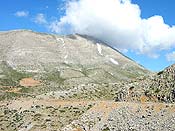
|
|
|
|
Psiloritis
|
| In
addition to these high massifs you also find some smaller: Kedros (1777
m) is situated southwest of Idi
and forms the Amari Valley. Asterousia runs along the coast south of the
Messara Plain. East of the narrow "corridor" between Ierapetra
and the north coast Thripti rises steeply. Finally you find a lower part
of mountains south of Sitia.
|
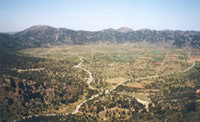 |
Crete
also has a number of tablelands. The most important is the Lassithi Plain (900 m) in the Dikti mountains,
which is an important agricultural
area. In the Idi mountains is the Nida Plain situated in an altitude of
1400 m. In Lefka Ori is the Omalos Plain (1.080
m) that among other things
is known from the old resistance song (Πότε
θα κάνει ξαστεριά).
|
|
Omalos
|
|
|
|
|
|
|
|
|
| The
largest plain is the Messara Plain south of the Idi mountains. You also
find plains at Kastelli, Chania, Georgioupoli, Rethymno, south and east of
Iraklio and at Sitia.
|
| You
do not find many bigger rivers
in Crete, but on the other hand it has
countless smaller ones. Almost all of them are dried out in summer but at
heavy showers and when the snow is melting in spring they change into
violent streams.
|
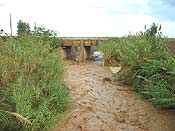
|
|
There
is only one natural lake
in Crete: Lake Kournas south of Georgioupoli. The
other lakes you see are man-made and function as reservoirs.
|
|
|
|
|
|
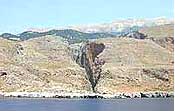 |
Characteristic
of Crete is the large amount of caves that are formed by the water's
erosion of the limestone layers. An equal impressing phenomenon in the
landscape of the island is the many gorges (Agía
Iríni, Samariá, Arádena, Ímbros, Kourtaliótiko etc.).
|
|
The
Aradena Gorge
seen from the sea
|
|
|
|
|
|
|
|
| Forests
as we know them in Denmark do not exist
in Crete, but especially
in
Western Crete you meet woodlands with coniferous, chestnut and oak. In
many of the island's gorges you also find a rich
growth.
Futhermore there
are small woods
of the unique
Phonix
Theophrastii palm at Vai in Eastern Crete and at the beach near the
monastery Preveli.
|
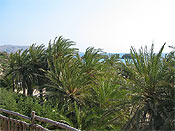
|
|
|
|
|
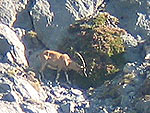 |
In
the gorges and in the more inaccessible places
in Crete you meet an
exceptionally rich fauna and flora. There are many endemic plants and a
species of a wild goat - the Kri-kri - which now lives freely only in the
Lefka Ori, in the Samaria Gorge and on the small islands of
Ágii
Theódori and Día.
|
|
Kri-kri |
|
| Even
though Crete is a mountainous island with relatively few plains it still
has a rich agricultural production because of the fertile soil, the good
climate and - you probably have to add - the many greenhouses on the south
coast. The most important crops are olives, grapes (for both wine and
raisins), citrus (especially the sweet cretan oranges outdo by far what
you can find in the danish market), vegetables, carobs, medicinal plants,
bananas, avocados, kiwies etc.
|
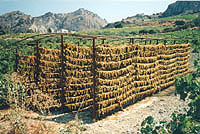
|
|
|
|
Grapes
hung to dry |
|
|
|
|
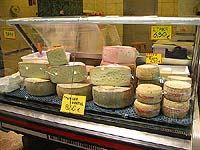 |
Animals
(especially sheep and goats) and fishing are important factors for the
economy of the island too. Sheep and goats graze in the mountains, and the
production of yoghurt and cheese from their milk (cretan graviera,
kefalotyri, anthotiros and
mizithra) is well-known for their tastiness and quality.
|
|
|
|
|